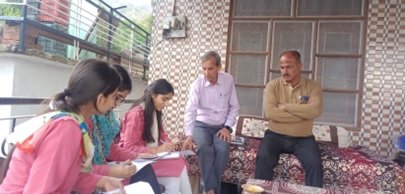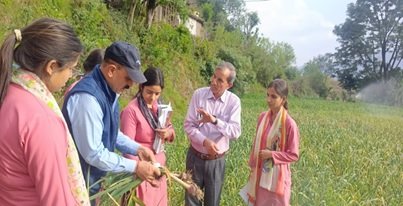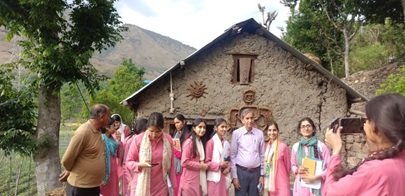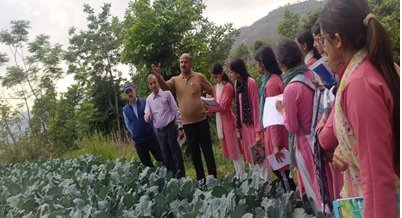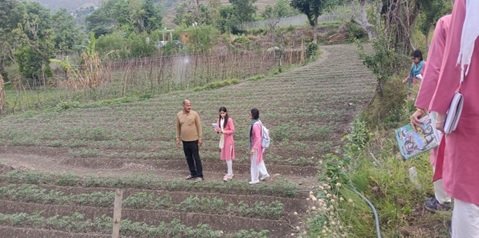COMMUNITY OUTREACH WORKSHOP AT DHAROTI

COMMUNITY OUTREACH WORKSHOP AT DHAROTI
On 29th April, 2024 at 3:00 pm, fourteen (14) Students of B.Sc. (Hons.) Ag 3 rd year and M.Sc Ag (Agricultural Economics) were taken to a Village Dharoti about 7 km before Rajgarh by S.K.Chauhan the course incharge of Farm Management Production & Resource Economics. The village is
situated below 2 km from the main Rajgarh-Nahan via Khairi road. While reaching the target village it was noticed that all other adjoining villages were well-connected with Kachcha linked road. The village is having good irrigation facility managed through cemented tanks, bore-wells and delivery
pipes. The irrigation is applied through sprinklers to make judicious use of scarce water and to save the soil being eroded and to ensure minimum loss of nutrients through leaching by flood irrigation. Meeting cum interactive workshop was held at the residence of Sh Ravinder Thakur, a progressive cum innovative farmer who lives in a joint family of his parents and three brothers and their families. In the interactive meeting, the students collected information on use of inputs and output realized from garlic cultivation for preparing enterprise budget which is one of the main cash crops grown by
farmers since 20 years. The farmer shared his practical knowledge with the students with regard to the mode of marketing (from harvesting to grading, packing, transportation and final disposal in different markets of New Delhi) of different cash crops such as tomato, capsicum, beans, broccoli, radish, potato, ginger, plum, kiwi, marigold, chrysanthemum locally known as surf and babuna, etc.
The contact farmer reiterated that there is no problem in the marketing of cash crops produce and receiving payments without any unauthorised deductions.
After interactive meet with the progressive farmer at his residence in the presence of his family members, the students were shown the cattle shed where bullocks, milking cows (five), sheep and goat were separately maintained. The method of collection and disposal of cow dung was
elaborated and the pits were shown. The farmer reported that he sells daily 15 to 16 litres of milk in the Rajgarh market. Detailed information on garlic which was about to harvest after 15 days was gathered by the students physically on the field by observing the status of standing crop. The students could notice clear cut difference in the health of garlic with the neighbouring fields. The fields of tomato and broccoli were also shown to the students. As a risk mitigating measure, new plantation of apple and kiwi in the vegetable grown fields was also shown as a long-term planning to shift to diversification in favour of fruits.
In brief on the day of visit the students clarified their doubts and came to know about different aspects of commercial farming as given below:
1. Purchase of inputs (ferlilizers, plant protection material)
2. Field preparations (number of ploughing to be followed before
sowing, role of planking)
3. Application of inputs (method and mechanism of preparing solutions,
seed treatments)
4. Crop harvest methods & storages
5. Mode and mechanism of marketing
6. Price realization and mode of payment
7. Control of insect pests and diseases
8. Maintenance of records and accounts
9. Utilization of income for family welfare and reinvestment for further
improvement of land and development of orchard
